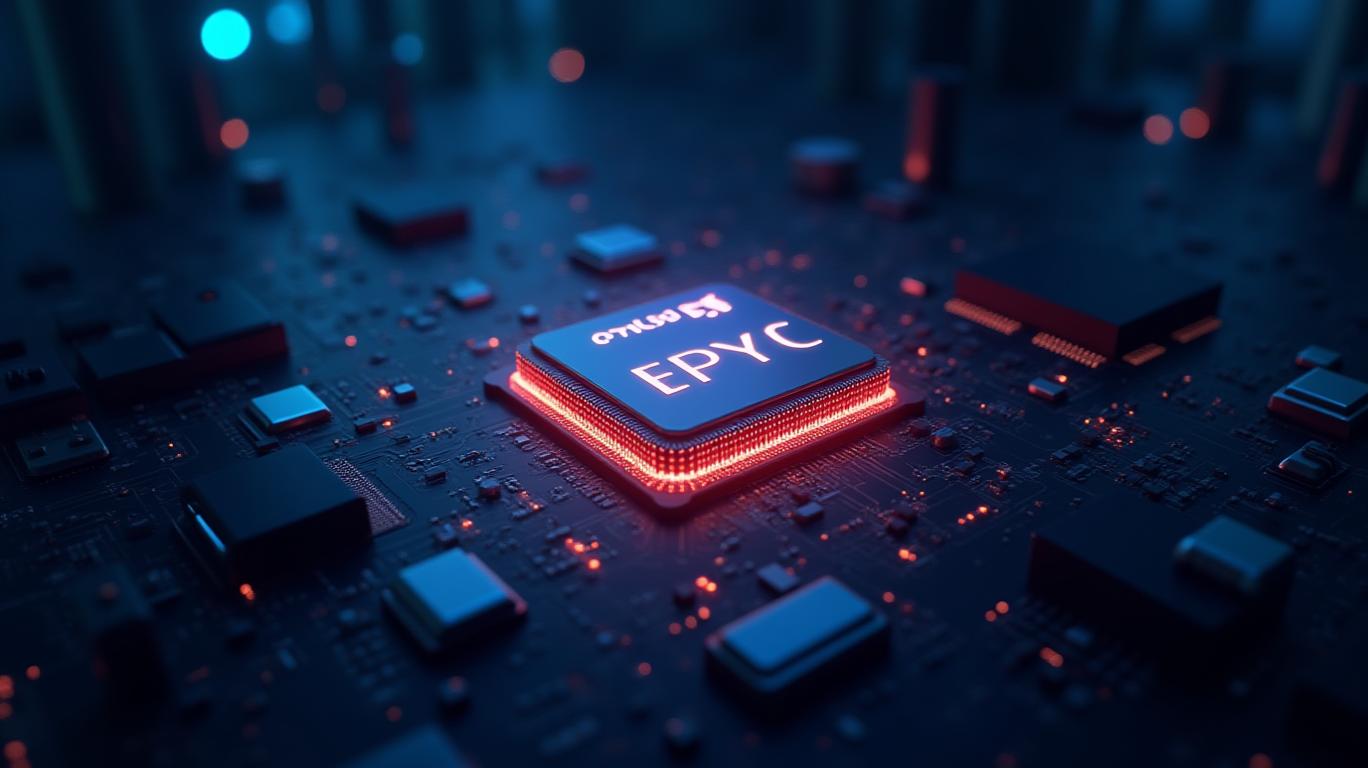AMD Naviges Turbulent Waters Amid Innovation and Trade Headwinds
In the semiconductor industry’s high-stakes race to dominate AI infrastructure, Advanced Micro Devices (AMD) is balancing bold technological bets with geopolitical turbulence. Over the past week, the company has faced both setbacks and opportunities, from a costly write-down tied to U.S.-China trade tensions to strategic moves that position it as a challenger to NVIDIA in AI server markets. Here’s what investors need to know.

The $800 Million Write-Down: A Cost of Geopolitical Friction
AMD announced on April 23 that it will take a $800 million charge in Q1 2025, primarily due to inventory write-downs and halted shipments of its MI308 AI chips to China under new U.S. export restrictions. This marks a stark financial hit for the company, as China accounts for 24% of AMD’s 2024 revenue, per Barchart analysis.
The write-down underscores the fragility of global semiconductor supply chains amid escalating trade tensions. “AMD’s challenge mirrors broader industry struggles,” said analyst Rajesh Ghai of Simply Wall St. “The company must now redirect inventory and diversify its customer base to offset losses.”
Despite the write-down, AMD’s stock rose 4.79% on April 24 amid hopes of easing U.S.-China trade barriers. Analysts maintain a “Moderate Buy” consensus, citing AMD’s long-term AI and data center strategies.
Strategic Moves to Counter NVIDIA’s Dominance
AMD is countering its near-term headwinds with aggressive investments in AI infrastructure and partnerships:
ZT Systems Acquisition ($4.9 Billion): Finalized on April 23, this deal strengthens AMD’s AI and cloud infrastructure capabilities. ZT’s expertise in data-centric computing complements AMD’s EPYC CPU and Instinct GPU portfolio, positioning it to better compete with NVIDIA’s AI chip dominance.
Ant Group Shift to AMD Chips: The Chinese fintech giant is reportedly moving its AI training from NVIDIA GPUs to AMD’s MI300X accelerators. This signals a strategic shift in supply chains, potentially boosting AMD’s data center prospects.
Computex 2025 Announcements: AMD’s May 21 press conference at Computex will showcase AI advancements, including its 5th Gen EPYC processors, which deliver double the performance of prior generations. Cisco and IBM are already integrating these chips into next-gen networking systems.
The Road Ahead: Risks and Opportunities
AMD’s near-term path is fraught with challenges:
- Trade Uncertainty: The $800 million write-down highlights reliance on China. Analysts warn that further restrictions could pressure margins.
- AI Adoption Lag: AMD’s MI300X AI accelerators face stiff competition from NVIDIA, which holds 89% of the AI server GPU market.
Yet AMD’s long-term prospects are bolstered by its diversified product pipeline and strategic moves:
- Zen 5 Architecture: New 16-core Zen 5c CPUs feature shared L3 caches, optimizing performance for HPC workloads.
- Radeon RX 9060 XT GPU: Set to launch on May 18, this budget GPU targets the mid-range gaming market, where AMD aims to regain ground lost to NVIDIA.
Conclusion: AMD’s Resilience in a High-Stakes Game
AMD is navigating a turbulent landscape where geopolitical risks and technical innovation are equally critical. While the $800 million write-down and China-related headwinds pose short-term challenges, the company’s aggressive moves—ZT acquisition, 5th Gen EPYC, and Computex announcements—signal a clear strategy to challenge NVIDIA’s AI supremacy.
Investors should watch two key catalysts:
1. Q1 Earnings on May 6: Will AMD demonstrate demand resilience or further margin pressure?
2. Computex 2025: Can AMD’s AI showcase redefine its position in data center and professional markets?
For now, AMD’s stock trades at a forward P/E of 22.4x, with a consensus price target of $144.14 (58% upside). The path to success hinges on executing its AI roadmap while mitigating geopolitical risks—a balancing act that will define the company’s next chapter.


_442a2dcc1749832873286.jpeg)
_e68fac6d1749831664430.jpeg)






現價可買入嗎